Did you know that finishing your weaving starts during the actual weaving process? Or at least it should. It’s important to weave in your weft tails as you go to make finishing easier.
First, let’s go over what “tails” even are! If you checked out my post on the 5 easy to fix weaving mistakes than you might already know. If not – check it out!
Your tails are the ends of your yarn from whenever you start a new color or run out of the previous length of yarn. A lot of weavers let them hang out the sides of their weaving with the intent to deal with them later.
You want to try to reduce the amount of tails in your weaving as much as you can because it means you will have less to do later!
Let’s look at some different scenarios.
Tapestry
The technique that you decide to use when dealing with your weft is largely influenced by whatever method you prefer. There are some occasions where some methods aren’t ideal – but mostly it’s up to you.
For example, the first technique that I will be discussing is probably one of the least used techniques. That being said, it’s the one that I learned first and therefore the one I use the most often.
What can I say, you usually stick with what you know.
Weave 2 Weft Tails On The Same Side
This technique has the potential to build up your selvedges somewhat, but if your weft is thin enough – then this really shouldn’t be an issue. Using this method is possibly a little more secure than the overlapping method (discussed later) but really they should all be pretty stable. This is especially true if you finish them by securing them in a warp channel when the weaving is finished. (I always do!)
Now, there are 2 schools of thought when it comes to dealing with your weft ends this way. They both involve the same methods, but the difference is literally how you think about it.
So when you are dealing with your tails you will want to weave them back into the weaving as you go along. That means weaving about a half an inch of the end of your yarn on top of the previous line of weaving. You will weave the tail as the next line of the pattern and let the remainder of the tail (3-4 inches) hang out the back.
Back of weaving with weft tails on the same side
The part that trips most people up is what to do next. Since you will be continuing your weaving you will have to weave on top of the tail. Since the tail is woven in the next line of the pattern it can be confusing to know where in the pattern to start your next weft thread.
Do you start over or under?
So thought number 1 is this: You ignore the tail completely and go off of the pattern of the previous full line of weft. That would mean if you are weaving plain weave and the full line of weft ended over a warp then your next full line will start under.
Thought number 2: You follow the tail yarn. Since the tail is already the opposite of the previous full line of weft then following it will mean you have chosen the correct next line of the pattern.
There are now 2 ways to take it – either purchase the whole course at once for a discount or “create your own” course by purchasing just the parts you want! Either way, get 10% off for being a member of the Warped Community!
Either way, it will result in the exact same thing, but it all depends on what makes the most sense to you.
It can be counter intuitive to start out with the same pattern as the tail, but once you get past it, it will weave up correctly.
If you use this technique I recommend trying to vary the sides that your weft ends on to try to keep the bulking down as much as possible.
I would say that the biggest advantage to this method is the ability to stay consistent since you are starting and stopping all your weft tails the same way for the whole weaving and staying on the same side you ended on. This keeps everything weaving more fluidly.
Front of weaving with weft tails on the same side (beaten down)
Weave Weft Tails On Opposite Sides
Much like the previous technique, you will want to weave your weft tail about a half inch or so into the next shed and let the rest hang out the back of the weaving.
Instead of starting your next weft immediately on top of this tail, you would instead start on the opposite selvedge and then weave that tail in.
The biggest advantage to this technique is that it will help to keep the weft build-up to a minimum since you are spreading it out across both sides. Also, in this case you won’t have to worry about the ignoring or following conundrum of the above technique.
Back of weaving with tails on opposite sides.
Unfortunately, if this is your technique of choice, it doesn’t quite work when weaving discontinuous weft because you will have different colors on different selvedges. This technique is really best when weaving from selvedge to selvedge.
There may also be a time when (while weaving on a floor loom) it is important to have your treadles matched up to what side the weft is coming from. This can be a useful trick if you have a hard time remembering which treadle raises which harness. In this case, a different technique would work better.
Front of weaving with tails on opposite sides (beaten down)
Overlap Weft Tails Anywhere
Probably one of the most popular options for dealing with your weft tails is the overlapping method.
In this method, you could essentially start or stop your weft yarn anywhere in the weaving. You would just make sure to overlap the 2 wefts by a few warps and let the remaining tails hang out the back.
This is easily the simplest method as it requires very little thinking or planning ahead. That being said, I recommend still trying to stay close to your selvedges because the overlapping areas tend to be hidden better when directly in the middle of the weaving.
Another thing to consider is that if you are overlapping different colored weft yarns and you are wanting a full pick of each color – then you will definitely have to overlap at the selvedge. If you overlap in the middle, your horizontal line won’t be quite as straight.
Back of weaving with overlapped weft tails
Front of weaving with overlapped weft tails (beaten down)
Pattern/Balanced Weave
Dealing with your tails with your balanced or pattern weave isn’t much different than with tapestry. The overlapping method tends to blend into a pattern better than weaving in the tails at the selvedges. In general staying at the selvedge helps to keep the eye away from any inconsistencies that the weft ends could create. Pattern weaving has a higher chance of exposing your yarn ends due to the fact that it is more open.
The overlapping method should work especially well when working with wool (although it will work for any fiber) and if you plan to wash it. As long as the wool isn’t superwash than when you wash the fabric after it is finished it will allow the 2 wool weft yarns to felt together. The felting will help the weaving be more cohesive visually and allow it to be more stable as it essentially combines the two yarns into one.
If your yarn is especially thick you can also splice it before weaving it back in. To do this you will untwist the plies of the yarn and only weaving in some of the plies. You would also start the next line of your pattern with a spliced weft – essentially creating a normal-sized weft in its place.
If you are weaving your tails in at the selvedges, just remember to follow your pattern with the tail. Doing this will help it to blend in to the rest of the weaving.
What You DO NOT Want To Do
It can be really tempting to start one weft directly adjacent to the end of the previous yarn. You would think that this would eliminate your need to have double weft in your shed. While this is true, it also creates an exposed warp on the back of your weaving.
This could also be the case if you start weaving multiple colors in the same shed (discontinuous weft.) If you are weaving multiple colors than you are bound to have some tails in the middle of your weaving – there really isn’t any way to get around it. It can be especially tempting to try to avoid overlapping your weft yarns here since we’ve already discussed that you want to keep them at your selvedges. Don’t give into temptation! Overlap just a few warps – splice if you need to. I promise it will be ok!
One of the biggest reasons to avoid an exposed warp on the back of your weaving is because it will make the weaving different on the front and the back. If you want to create something that will be seen on both sides then you want to make sure you are weaving in your tails.
Not weaving in these weft tails also makes the line of weft slightly less stable. While the weaving itself isn’t going to just fall apart (Don’t worry!) You do want to make it so the weaving can be handled and weaving in your tails will do this.
The Last Tail
When you are finished weaving you have 1 last weft tail to deal with. Unlike the rest of your tails that are woven back in on top of the previous row, your last weft tail should weave under your last full line of weft. Just move up the weft yarn at your selvedge and weave back into the weaving a few warps. This will make it so that the last weft on your weaving is a full line. A full line of yarn will make it easier to finish off your warp.
Now What? Finish Them Off!
Regardless of the method you choose to weave in your weft tails, you will need to tuck them in once you’re done. This is much easier to do when the weaving is no longer under tension – so make sure you have secured your warp ends in some way so you can handle your weaving without worrying about it un-weaving.
On the back of the weaving you will locate a warp channel adjacent to the weft tail you are tucking in. You can thread your tapestry needle before inserting the tapestry needle down the channel if your tail is long enough. If it’s not long enough then you can insert the needle first and pull it through until the tail is able to go through the eye of the needle. Pull the tail all the way through and trim your tail!
Do this for all your tails and you are done! I always like to start in one corner and work my way across. It’s very satisfying to watch the back of the weaving get cleaner as you go!
There are many different methods and combinations of methods that you can use when weaving up your tapestry or patterned fabric. It really all depends on what works best for you and for your artwork.
Try out the different techniques and see if one feels better than the others! Then let me know in the comments what is your favorite way to deal with your weft tails.
⇣ Love It? Share It! ⇣
You May Also Like




















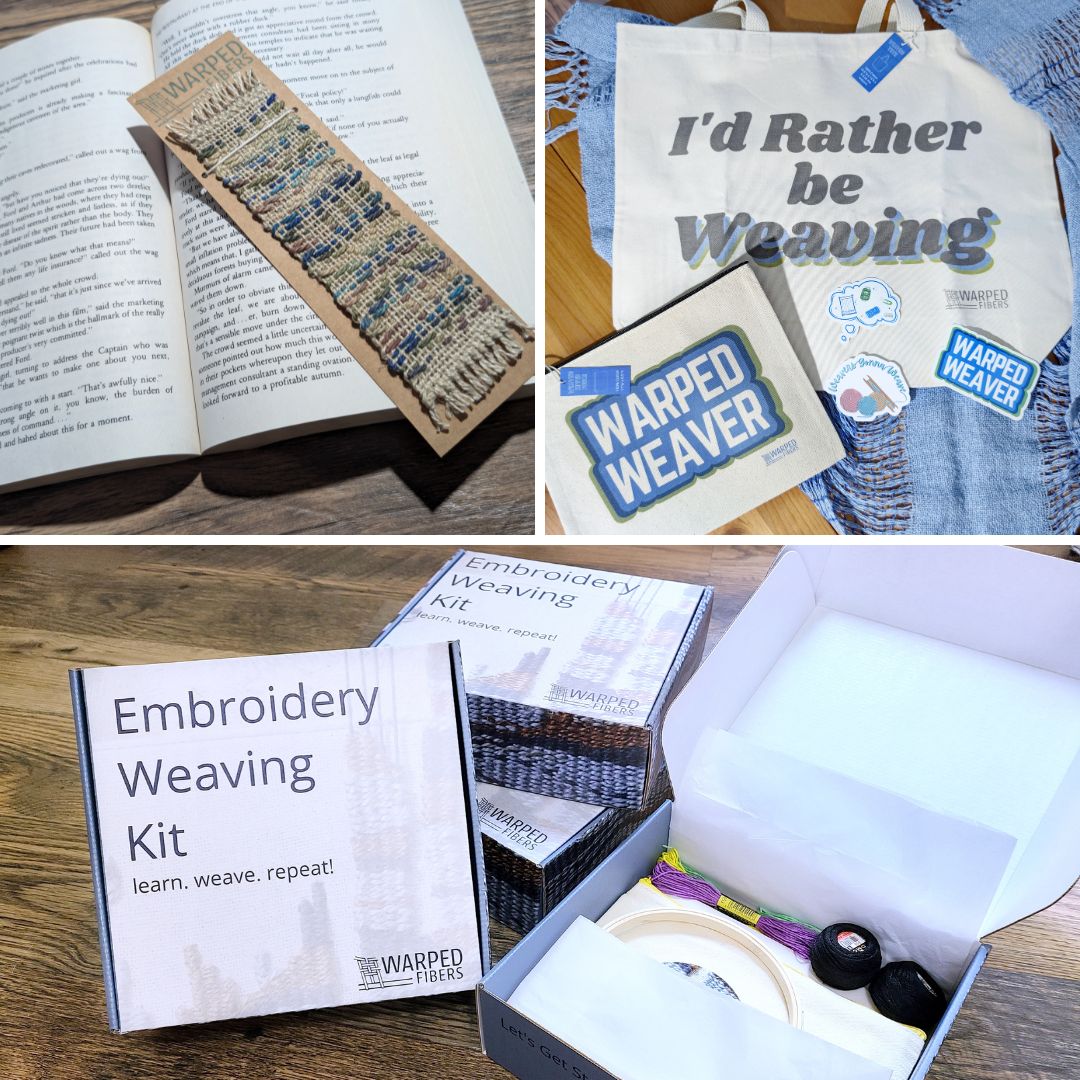

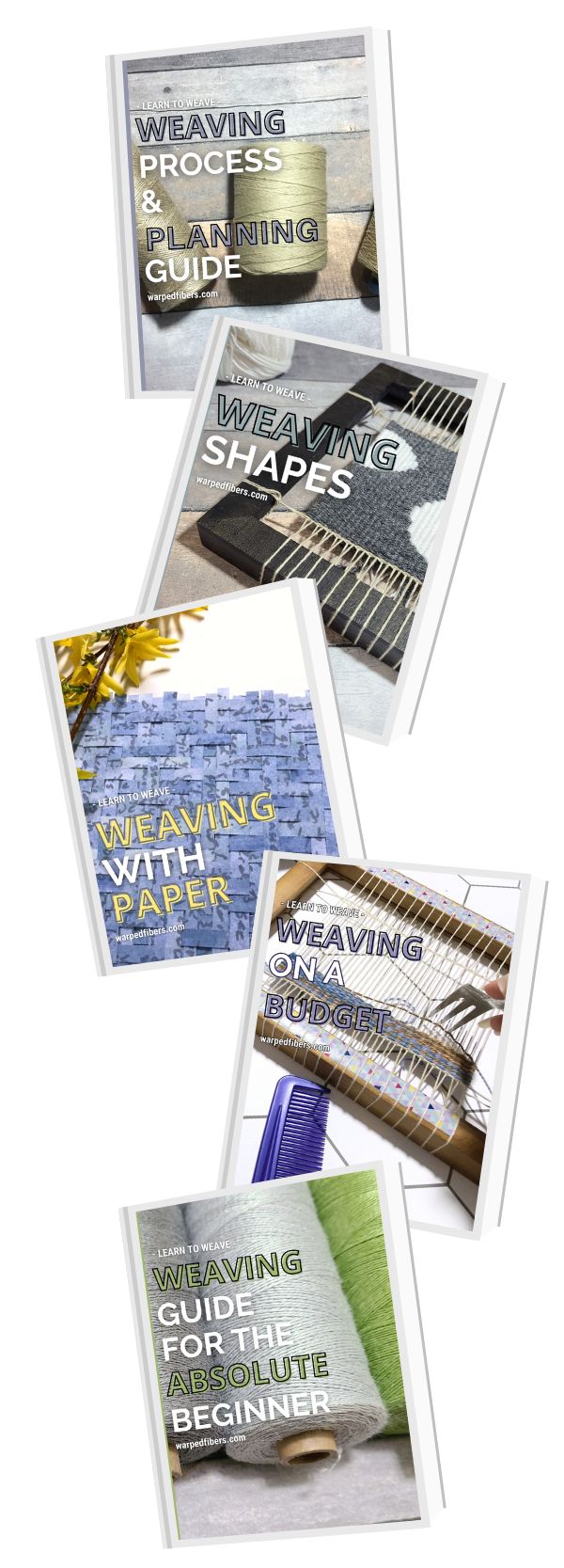
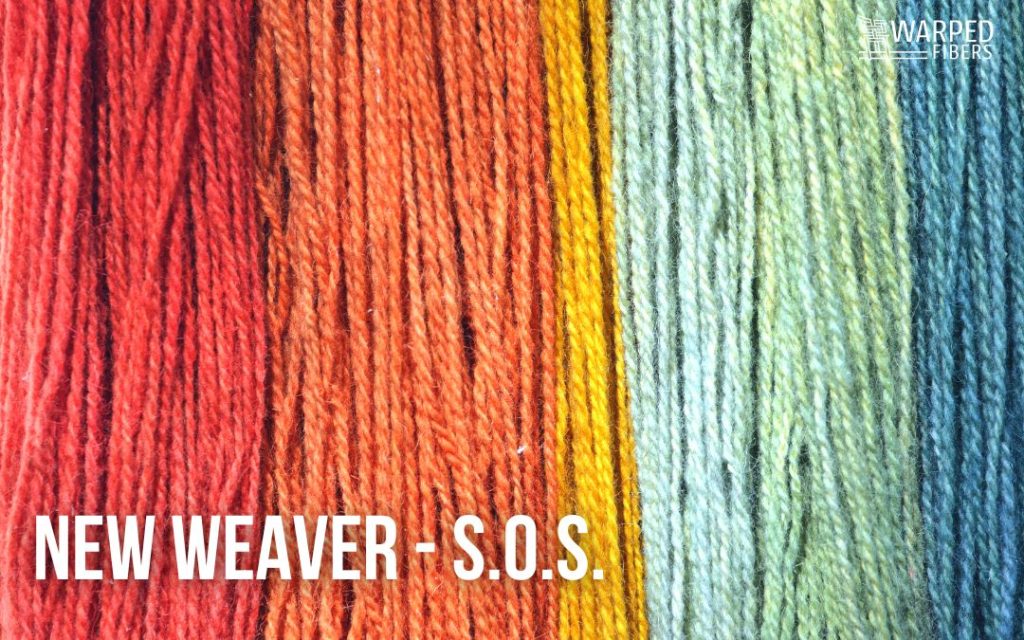

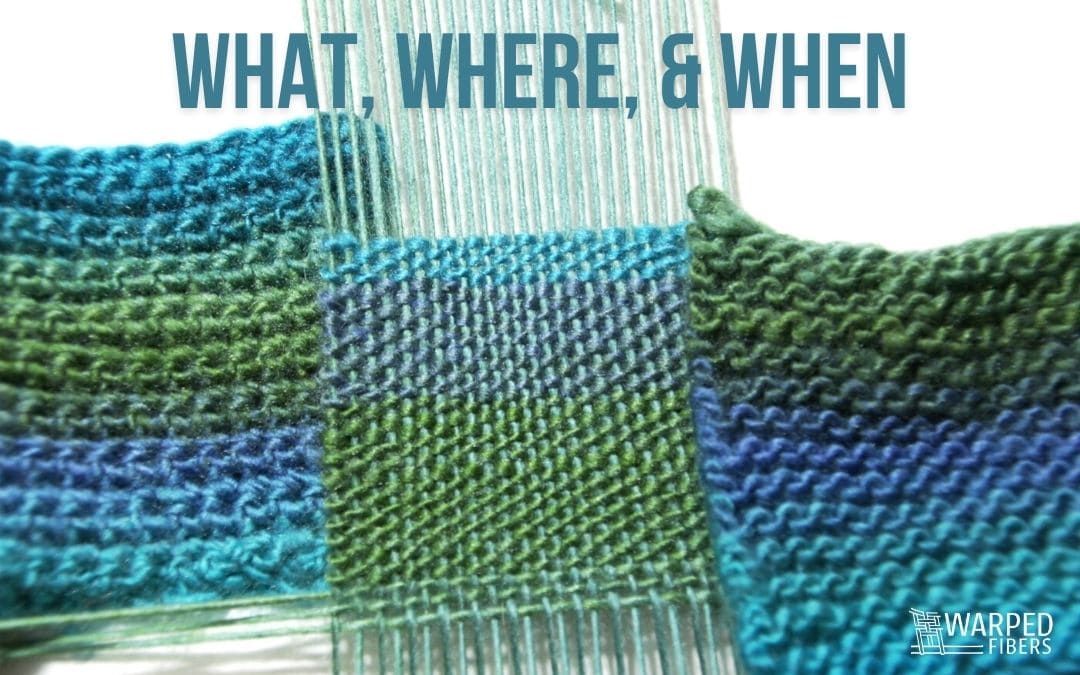
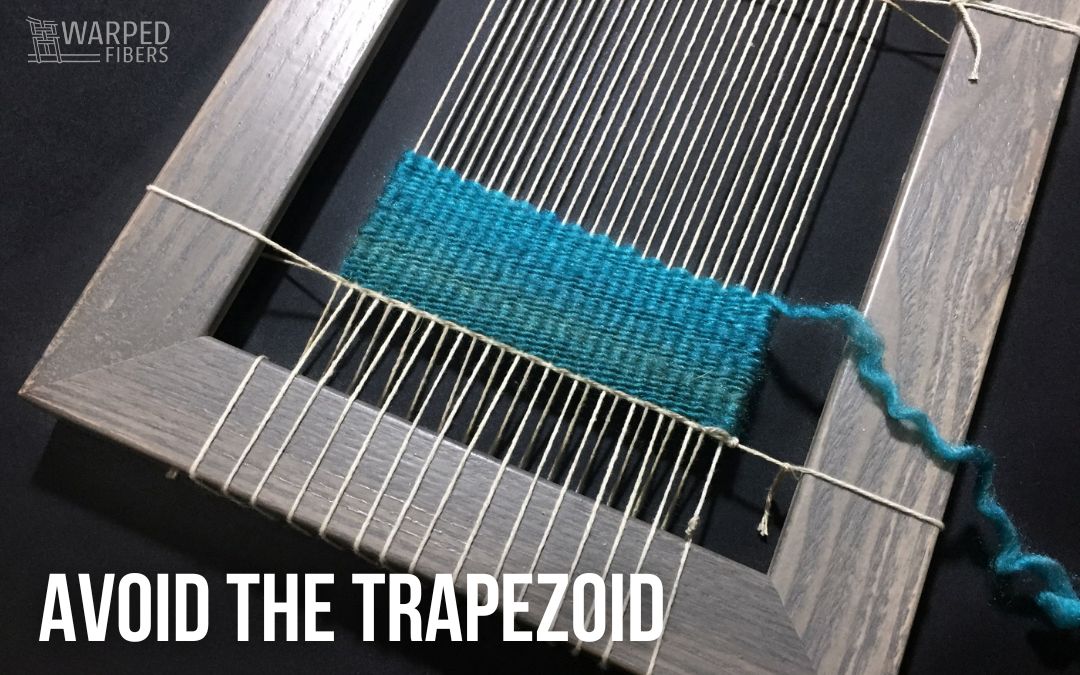


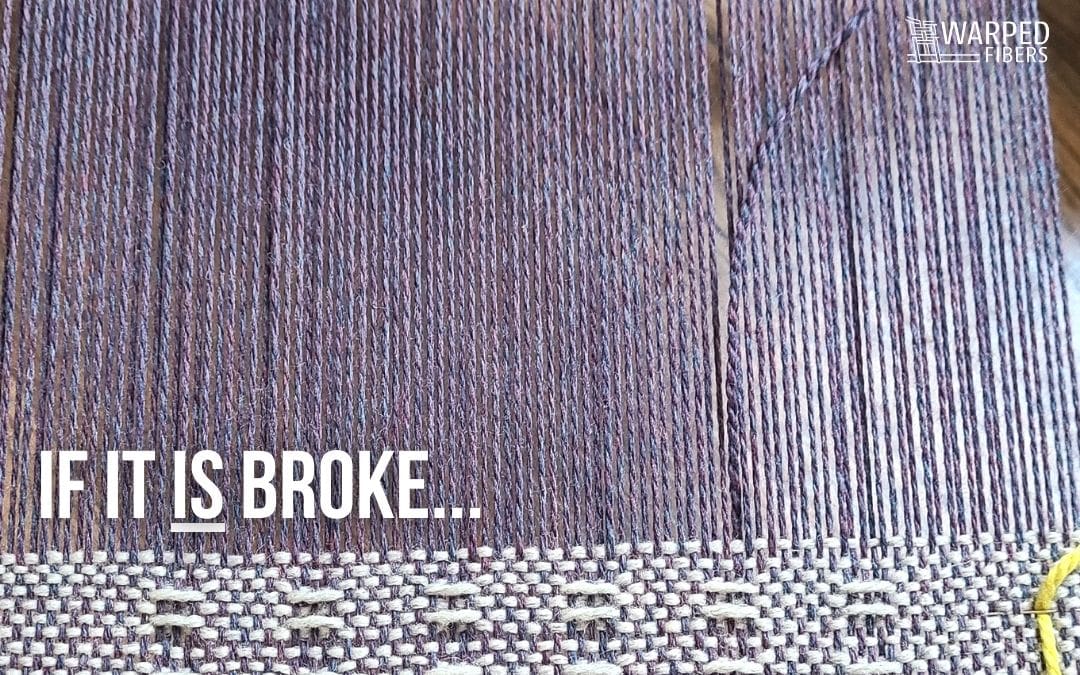


Your instructions are wonderfully thorough and easy to follow. I’m enjoying learning about the weaving process. Attention to detail is apparently key to a clean finish. Thank you for your insight.
Thank you! Yes, attention to detail can make a big difference in the finished weaving.
Very detailed post! Thank you for sharing!
I have always been curious about weaving and how its done! Great article!
Great article
Thank you!